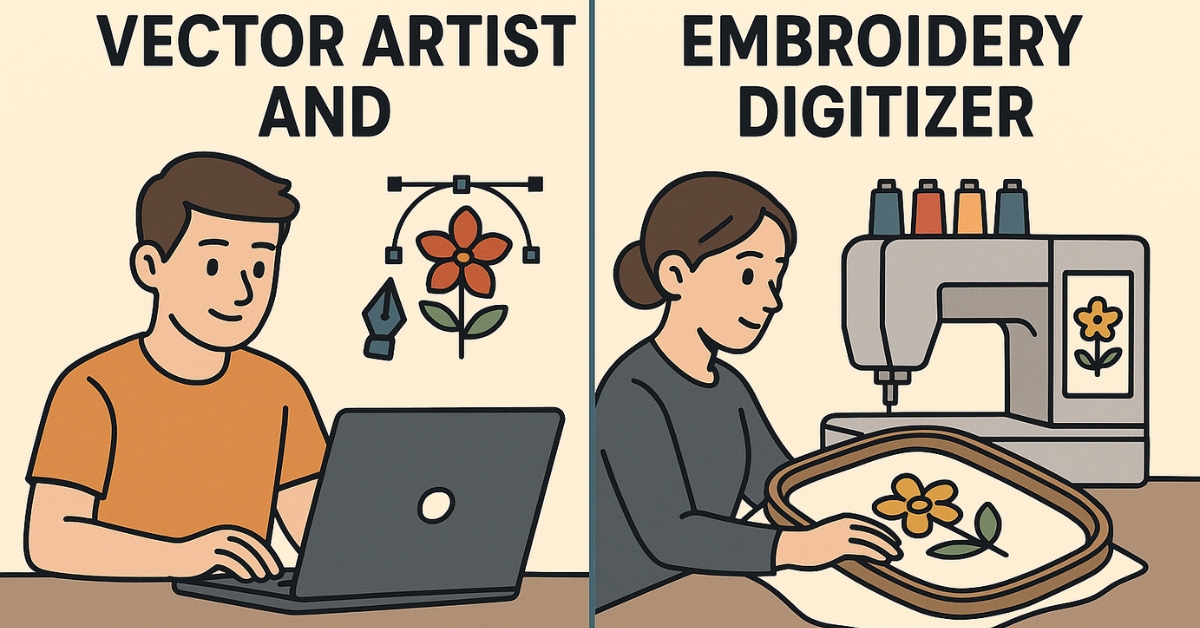Patch creators in the USA often struggle with designing patches multiple times. They have clothing ready to print, a brand logo in some format, but are still unsure about where to start.
In this blog, I will clarify the key differences between a graphic designer (vector artist) and an embroidery digitizer. I will also examine the working environment between them and outline how to approach the situation step by step.
Let’s begin.
File Format You Have
First things first, the logo image of your brand has always been in some digital format. It could be in PNG, JPEG, JPG, or PDF format. Well, with Patches Mania, you don’t need to worry about correcting one, as we have a team of graphic designers to create printing files and offer free edits. So, even if you have some sketch on paper, it’s enough to get started.
File Formats They Provide
A vector artist typically provides files in various formats, including AI, CDR, PDF, SVG, JPEG, JPG, and PNG. While an embroidery digitizer sends you a Preview file (PNG/JPG), DST, PDF, and emb versions.
The Sequence
The raw file of your brand logo is transferred between these designers. So, the sequence matters a lot. If the logo is ready to print, it should begin directly from the embroidery digitizer. In contrast, element replacements/edits require the vector artist to handle them first.
Role of Vector Artist (Pre-Digitizing)
Patches Mania receives 3 out of 4 orders when buyers need changes to the logos. They request modifications to the text, font, or addition/removal of elements within the logo. They are root-level edtis, which need fixing before going to embroidery.
To do this, we need a graphic designer, also known as a Vector artist. He will finalize drafts to be a ready-to-go logo image.
Role of Digitizer (Post Graphic Designing)
Digitizers refer to creating an ’embroidery patch’ digitally for use with an embroidery machine. A set of files for custom embroidery or patches. This is a readable file which is called ‘dst’,
Once finished with vectorization, the logo image is now in the hands of digitizers. An embroidery digitizer has limited back access; once your logo is ready, apparently, he is not supposed to ask to move/edit elements.
In other words, he is always next to the vector artist. To know more about digitizing files, read my blog.
Cost Difference
When it comes to cost, it depends on the complexity of the artwork/logo. The more complex an artwork is, the more expensive it is supposed to be. U.S companies charge between $10 $50 for vectorization for simple to advanced jobs. While embroidery digitizing also ranges somewhere between.
Again, this pricing is always flexible depending on the complexity of designs.
Getting Started With Patches Designing
In the world of customization, each logo is unique, and you may not know how to follow the sequence. Apparently, it may seem difficult to know where to start, but with Team Patches Mania. With years of experience in the U.S. market and international branches, we take responsibility for designing, re-designing, editing, and finalizing your logo into an excellent-quality custom patch.
All you need to do is send us a logo image with the size and theme in mind; we have both types of designers ready to sketch, digitize, and provide mock-ups before proceeding to printing. C’mon, Get in Tough!




